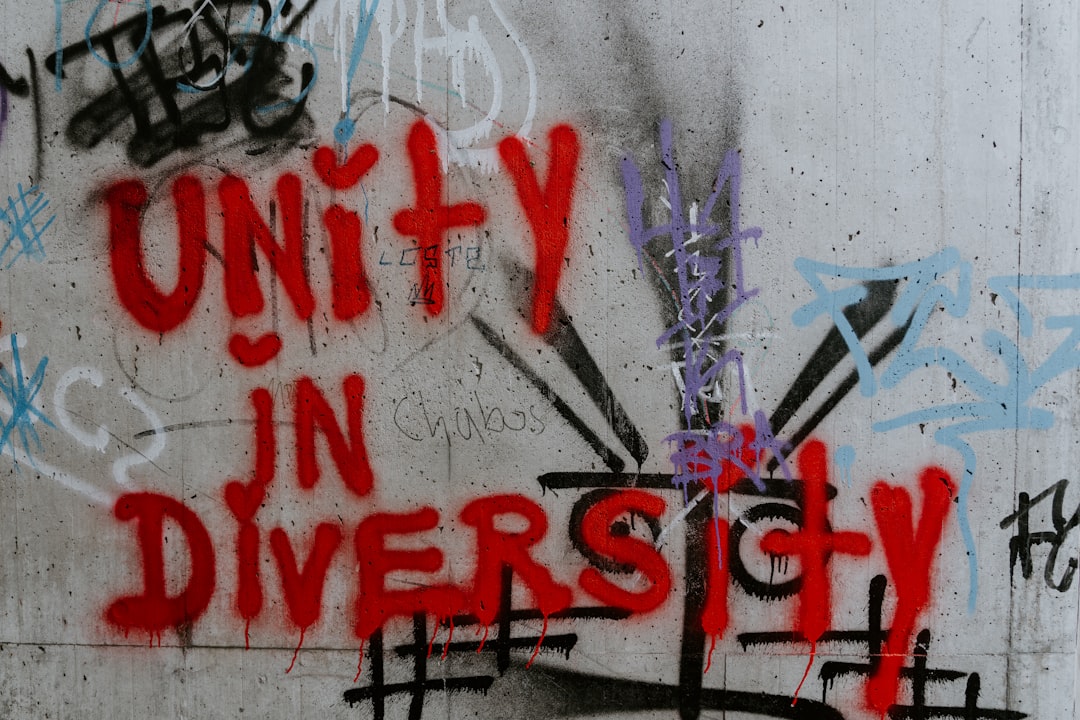Cultural factors play a pivotal role in shaping social behavior, influencing how individuals interact with one another within their communities. These factors encompass a wide array of elements, including traditions, beliefs, values, and communication styles that are passed down through generations. Understanding these cultural dimensions is essential for comprehending the complexities of human interactions.
Social behavior is not merely a product of individual personality traits; it is deeply embedded in the cultural context in which individuals are situated. This interplay between culture and social behavior can be observed in various aspects of life, from family dynamics to workplace interactions, and even in broader societal norms. The significance of cultural factors extends beyond mere academic interest; it has practical implications in an increasingly globalized world.
As societies become more interconnected, the potential for cross-cultural misunderstandings rises. Misinterpretations can lead to conflicts, hinder collaboration, and create barriers to effective communication. Therefore, a nuanced understanding of cultural influences on social behavior is crucial for fostering harmonious relationships in diverse environments.
By examining the intricate relationship between culture and social behavior, we can gain insights into the motivations behind actions and reactions in various social contexts.
Key Takeaways
- Cultural factors play a significant role in shaping social behavior and interactions.
- Cultural norms and values greatly influence how individuals behave and interact within their society.
- Communication styles vary across cultures and can impact social interactions and relationships.
- Cultural beliefs and traditions have a profound impact on social relationships and dynamics.
- Understanding cultural factors is crucial for navigating group dynamics and social settings.
The Role of Cultural Norms and Values in Shaping Social Behavior
Cultural norms and values serve as the foundational pillars that guide social behavior within any given society. Norms are the unwritten rules that dictate acceptable behavior, while values represent the collective beliefs about what is important or desirable. For instance, in collectivist cultures such as those found in many Asian countries, the emphasis is often placed on group harmony and familial loyalty.
This cultural orientation influences individuals to prioritize the needs of the group over personal desires, leading to behaviors that promote cooperation and consensus-building. In contrast, individualistic cultures, like those prevalent in Western societies, tend to celebrate personal achievement and self-expression, resulting in behaviors that encourage competition and assertiveness. The impact of these cultural norms and values can be observed in various social settings.
In a workplace environment, for example, employees from collectivist cultures may be more inclined to engage in team-oriented projects and seek consensus before making decisions. Conversely, individuals from individualistic backgrounds might be more comfortable taking initiative and asserting their opinions during discussions. These differences can lead to misunderstandings if not recognized and appreciated by individuals from different cultural backgrounds.
Acknowledging the role of cultural norms and values is essential for fostering effective communication and collaboration in diverse teams.
The Influence of Cultural Communication Styles on Social Interactions

Communication styles are profoundly influenced by cultural factors, shaping how individuals express themselves and interpret messages from others.
High-context cultures, such as those found in Japan or Arab countries, rely heavily on non-verbal cues, context, and shared experiences to convey meaning.
In these cultures, much of the communication is implicit; understanding often requires reading between the lines. For example, a simple nod or a pause in conversation can carry significant weight, indicating agreement or hesitation without explicitly stating it. This reliance on context can lead to misunderstandings when individuals from low-context cultures—where communication is more direct and explicit—interact with them.
Conversely, low-context cultures like those in Germany or the United States prioritize clarity and directness in communication. Individuals from these backgrounds may perceive high-context communicators as vague or evasive due to their reliance on subtleties. This divergence in communication styles can create friction in social interactions, particularly in multicultural settings where individuals must navigate different expectations.
Understanding these cultural communication styles is crucial for effective interpersonal interactions, as it allows individuals to adapt their communication strategies to foster better understanding and connection.
The Impact of Cultural Beliefs and Traditions on Social Relationships
| Cultural Beliefs and Traditions | Impact on Social Relationships |
|---|---|
| Family Structure | Defines roles and responsibilities within the family, affecting how individuals interact with each other. |
| Communication Styles | Influences how people express themselves and understand others, shaping the dynamics of social interactions. |
| Gender Roles | Determines expectations and behaviors for men and women, impacting relationships and power dynamics. |
| Ceremonies and Rituals | Strengthens social bonds and fosters a sense of community through shared experiences and traditions. |
| Conflict Resolution | Shapes the approach to resolving disputes and maintaining harmony within social groups. |
Cultural beliefs and traditions significantly influence the formation and maintenance of social relationships. These beliefs often dictate how relationships are initiated, nurtured, and even dissolved. For instance, in many Indigenous cultures, relationships are built on a foundation of shared history and communal ties.
The concept of kinship extends beyond biological connections to include a broader network of relationships that are vital for social cohesion. In such contexts, rituals and traditions play a crucial role in reinforcing these bonds, as communal gatherings and ceremonies provide opportunities for individuals to connect and strengthen their ties. In contrast, modern Western societies may emphasize more fluid relationships based on personal choice rather than obligation or tradition.
The rise of digital communication has further transformed how relationships are formed and maintained, allowing individuals to connect across vast distances but also leading to more transient interactions. The impact of cultural beliefs on social relationships can be profound; for example, individuals from cultures that prioritize long-term commitments may view casual dating practices as superficial or insincere. Recognizing these differences is essential for fostering respectful and meaningful relationships across cultural boundaries.
Cultural Factors and Group Dynamics in Social Settings
Cultural factors significantly influence group dynamics within social settings, affecting how groups form, function, and interact with one another. In collectivist cultures, group cohesion is often prioritized over individual expression. This can lead to a strong sense of belonging among group members but may also suppress dissenting opinions or individual creativity.
For example, in team-based projects within such cultures, members may defer to the group leader’s decisions rather than voicing their own ideas or concerns. This dynamic can foster harmony but may also stifle innovation if diverse perspectives are not encouraged. On the other hand, groups formed within individualistic cultures may exhibit more competitive dynamics where individual contributions are highlighted.
Members might feel empowered to express their opinions freely, leading to vibrant discussions but also potential conflicts if differing viewpoints clash. The balance between collaboration and competition varies significantly across cultures, impacting how groups navigate challenges and achieve their goals. Understanding these cultural influences on group dynamics is essential for leaders and facilitators who aim to create inclusive environments that leverage the strengths of diverse teams.
Cross-Cultural Differences in Social Behavior

Cross-cultural differences in social behavior manifest in various ways, from greetings to conflict resolution strategies. For instance, the way people greet one another can vary dramatically across cultures; while a firm handshake may be standard in many Western countries, other cultures might prefer a bow or a cheek kiss as a sign of respect or familiarity. These seemingly small differences can carry significant implications for social interactions; failing to adhere to local customs can lead to perceptions of rudeness or disrespect.
Moreover, conflict resolution approaches differ widely across cultures. In some cultures, direct confrontation is seen as necessary for resolving disputes; however, in others, maintaining harmony may take precedence over addressing issues head-on. For example, in many Asian cultures, indirect communication is preferred when discussing conflicts to avoid causing embarrassment or loss of face.
Understanding these cross-cultural differences is vital for anyone engaging with diverse populations—whether in business negotiations or personal relationships—as it allows for more effective navigation of social landscapes.
The Effect of Cultural Factors on Social Identity and Self-Concept
Cultural factors play a crucial role in shaping social identity and self-concept by influencing how individuals perceive themselves within their cultural context. Social identity theory posits that individuals derive part of their self-concept from their membership in various social groups—such as ethnicity, nationality, religion, or profession—which are often defined by cultural characteristics. For instance, an individual from a collectivist culture may identify strongly with their family or community group, viewing their personal achievements through the lens of collective success rather than individual merit.
Conversely, individuals from individualistic cultures may prioritize personal achievements and self-expression as central components of their identity. This divergence can lead to different motivations and behaviors; for example, someone from a collectivist background might feel pressure to conform to group expectations even at the expense of personal desires. Understanding how cultural factors shape social identity is essential for fostering inclusivity and respect for diverse perspectives within multicultural environments.
Implications for Understanding and Addressing Cultural Factors in Social Behavior
Recognizing the influence of cultural factors on social behavior has profound implications for various fields such as education, business, healthcare, and community development. In educational settings, for instance, teachers who understand cultural differences can create more inclusive classrooms that respect diverse learning styles and communication preferences. This awareness can enhance student engagement and foster a sense of belonging among learners from different backgrounds.
In the business realm, organizations that prioritize cultural competence are better equipped to navigate global markets and build effective teams composed of individuals from diverse backgrounds. Training programs focused on cultural awareness can help employees develop skills necessary for effective collaboration across cultural boundaries. Similarly, healthcare providers who understand cultural beliefs about health and wellness can offer more personalized care that respects patients’ values and traditions.
Addressing cultural factors in social behavior is not merely an academic exercise; it is essential for building bridges between communities and fostering understanding in an increasingly interconnected world. By embracing cultural diversity as a strength rather than a barrier, societies can cultivate environments where all individuals feel valued and empowered to contribute meaningfully to their communities.
Objectivity in social science is a complex and often debated topic, as it involves the challenge of maintaining neutrality while studying human behavior and societal structures. A related article that delves into the distinctions between various social sciences, such as psychology, sociology, psychiatry, and philosophy, can provide valuable insights into how these fields approach objectivity differently. Understanding these distinctions is crucial for appreciating the unique methodologies and perspectives each discipline brings to the study of human society. For a deeper exploration of these differences, you can read more in the article titled “Understanding the Distinctions: Psychology vs. Sociology, Psychiatry, and Philosophy” available at this link.
FAQs
What is objectivity in social science?
Objectivity in social science refers to the idea that researchers should strive to approach their studies without bias or personal influence. It involves the pursuit of impartiality and neutrality in the collection, analysis, and interpretation of data.
Why is objectivity important in social science research?
Objectivity is important in social science research because it helps to ensure the credibility and reliability of the findings. By minimizing bias and personal influence, researchers can produce more accurate and valid results.
How do social scientists strive for objectivity?
Social scientists strive for objectivity by using rigorous research methods, being transparent about their research process, acknowledging their own biases, and seeking to minimize the impact of personal beliefs and values on their work.
What are some challenges to achieving objectivity in social science research?
Challenges to achieving objectivity in social science research include the influence of personal biases, the complexity of social phenomena, the potential for researcher subjectivity, and the impact of societal and cultural factors on the research process.
Can complete objectivity be achieved in social science research?
While complete objectivity may be difficult to achieve in social science research, researchers can strive to minimize bias and subjectivity through careful research design, transparent methodology, and critical self-reflection.






















+ There are no comments
Add yours